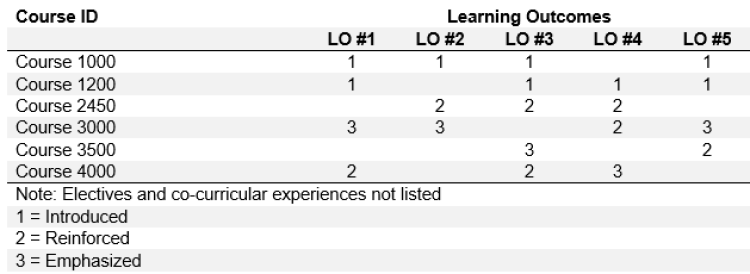Curriculum mapping is a process in which coursework is aligned with program learning outcomes. This mapping shows where learning outcomes are introduced, reinforced and emphasized throughout a student’s coursework in a program. It can also identify any gaps or inconsistencies which, once corrected, can improve the program’s effectiveness in achieving its learning outcomes. A curriculum map is a visual representation that links teaching content and student outcomes.
A curriculum map is a visual representation that links educational content and student outcomes. A curriculum map integrates courses and other learning activities with learning outcomes to comprehensively review and update program offerings. Curriculum maps make curricula more transparent to faculty, students, employers, and other stakeholders.
There is no single best way to approach curriculum mapping. However most approaches share four steps:
- Compile a list of the program’s learning outcomes.
- Compile a list of all courses and educational experiences (e.g., internships, research opportunities, licensing or comprehensive exams). Programs may find it helpful to begin by mapping required courses only
- Make a visual representation mapping outcomes, courses, and other educational experiences.
- Examine this visual representation as a group or committee and ensure that all learning outcomes are achieved through the completion of the coursework.


